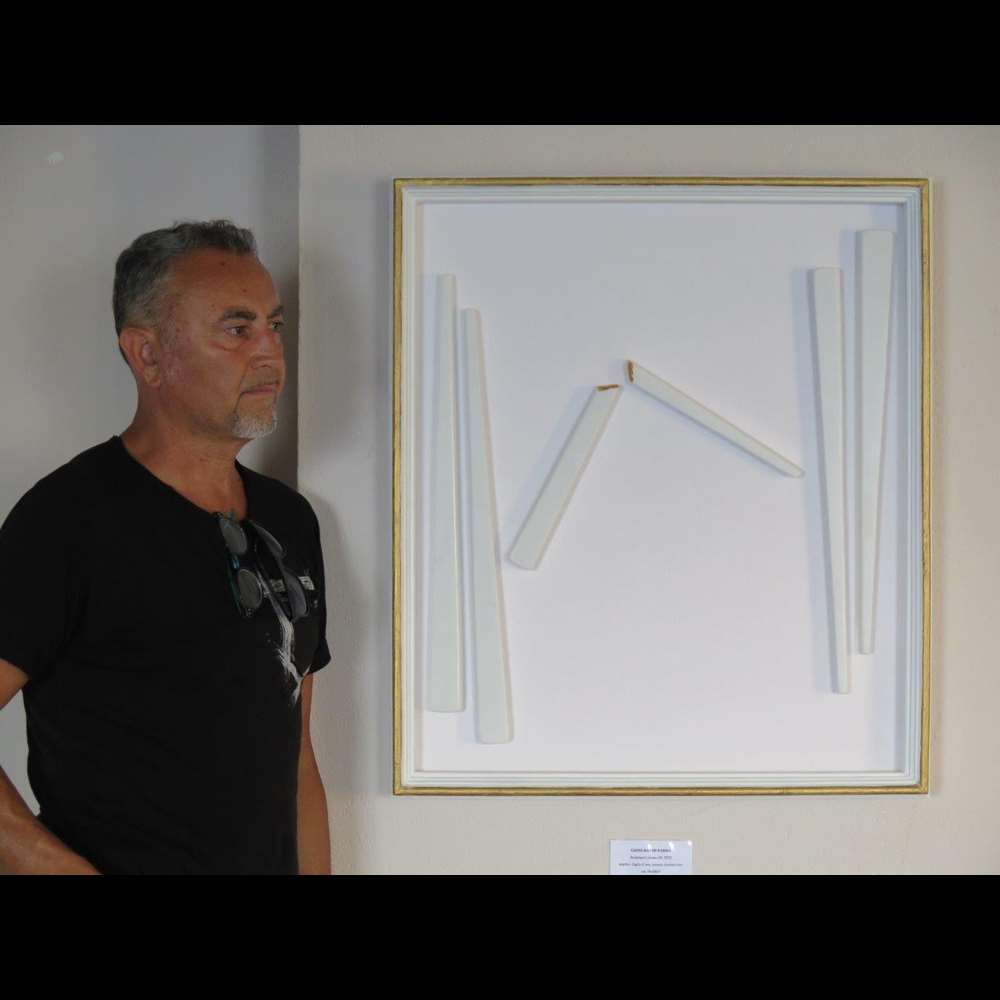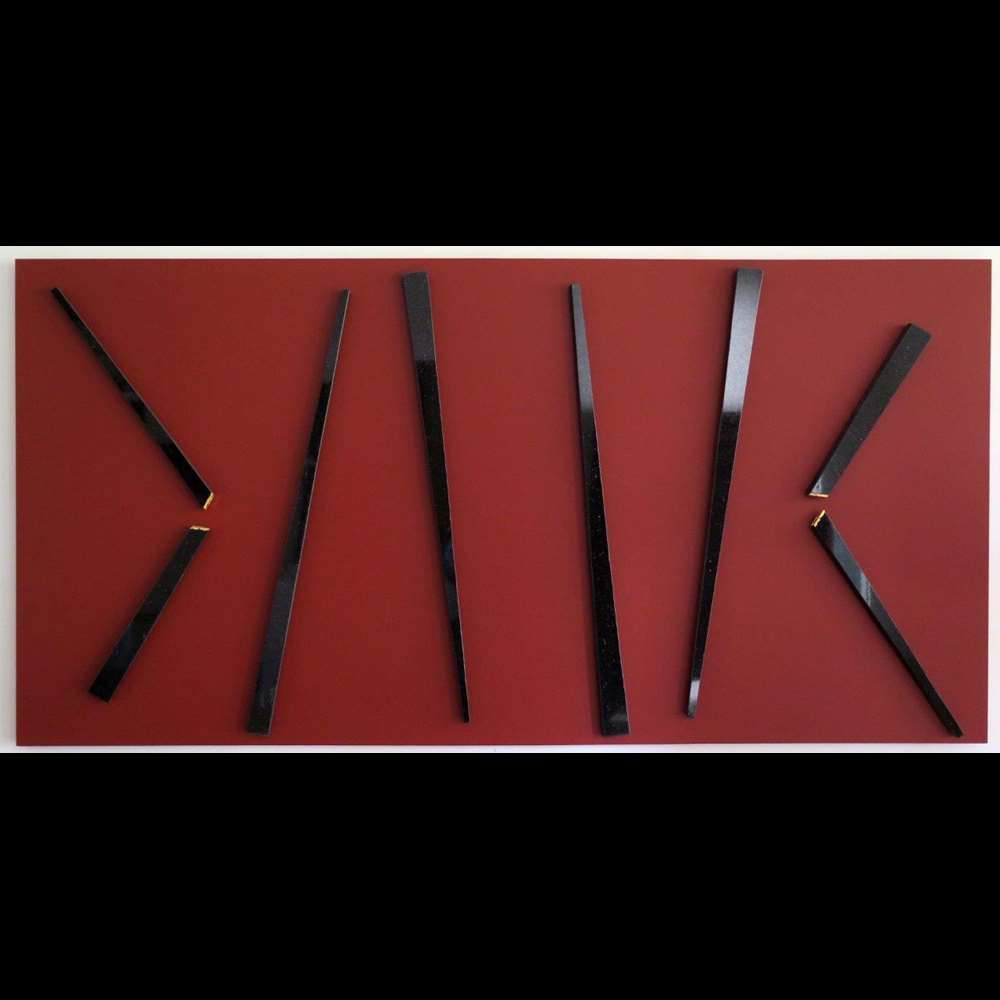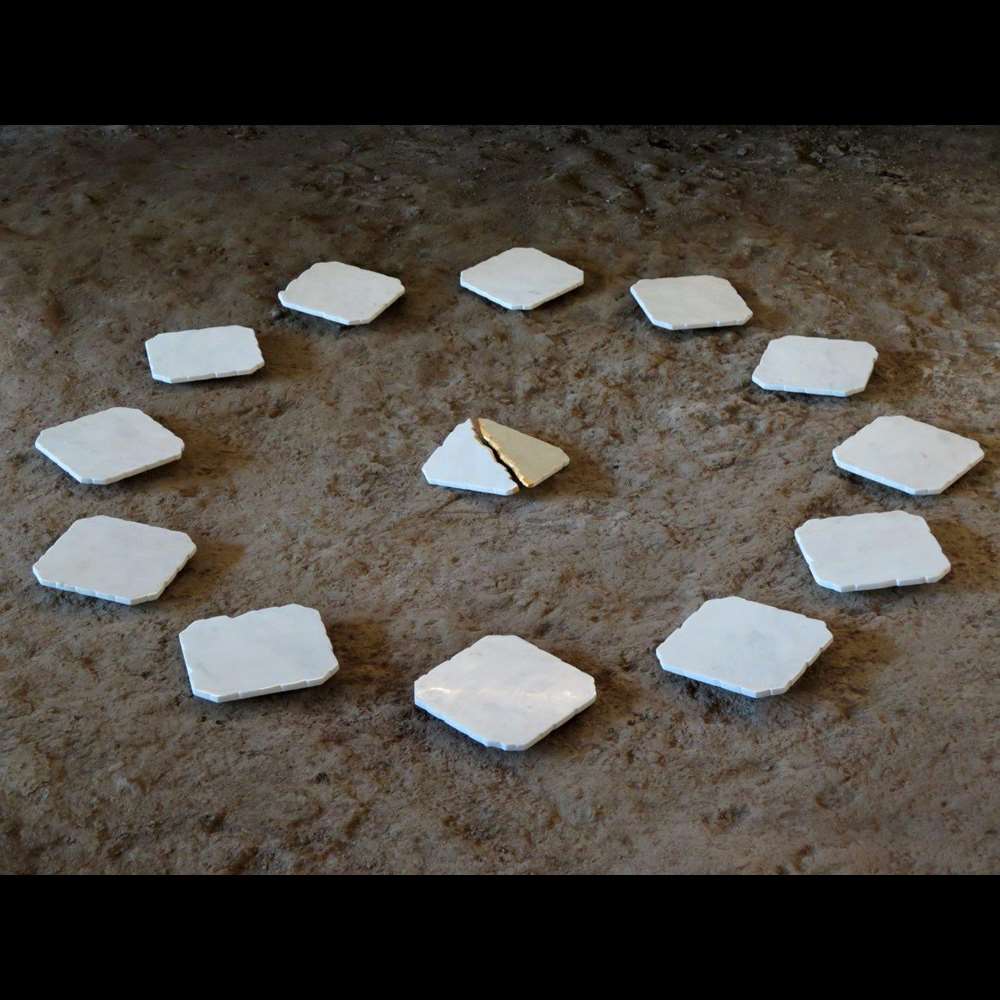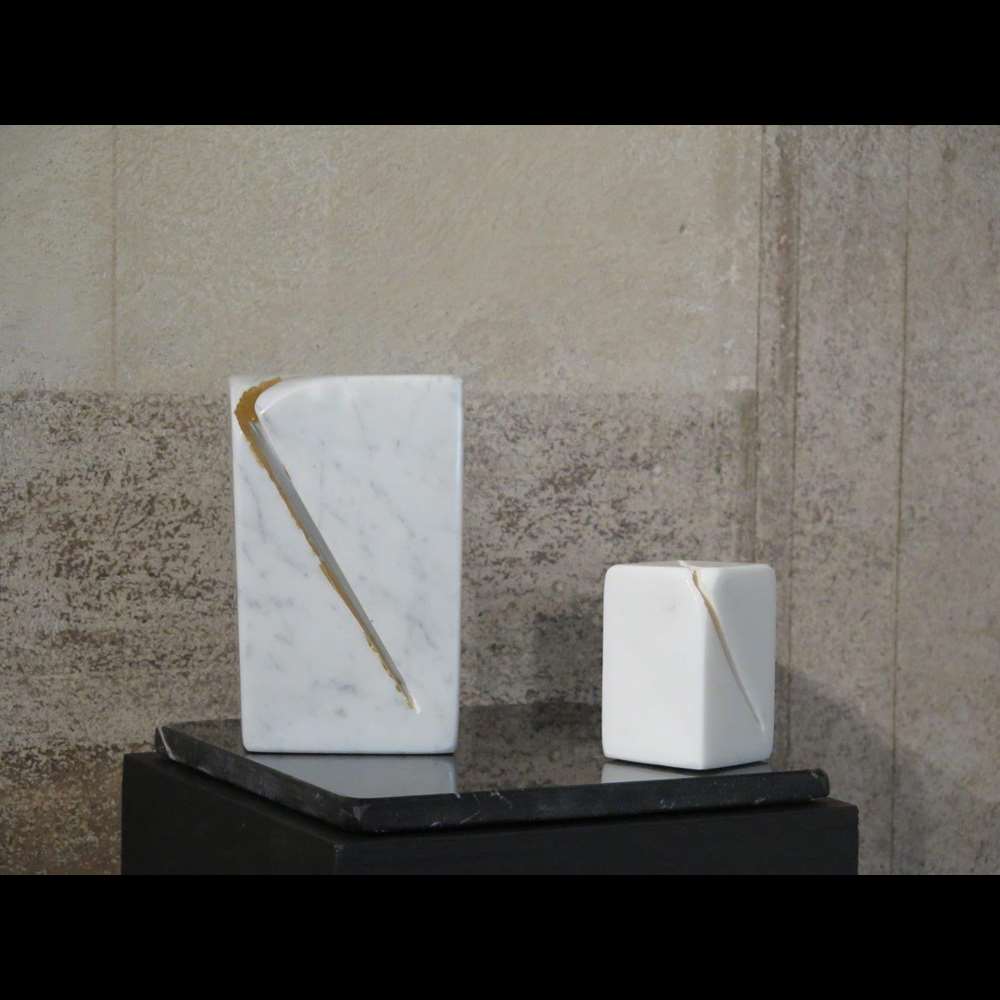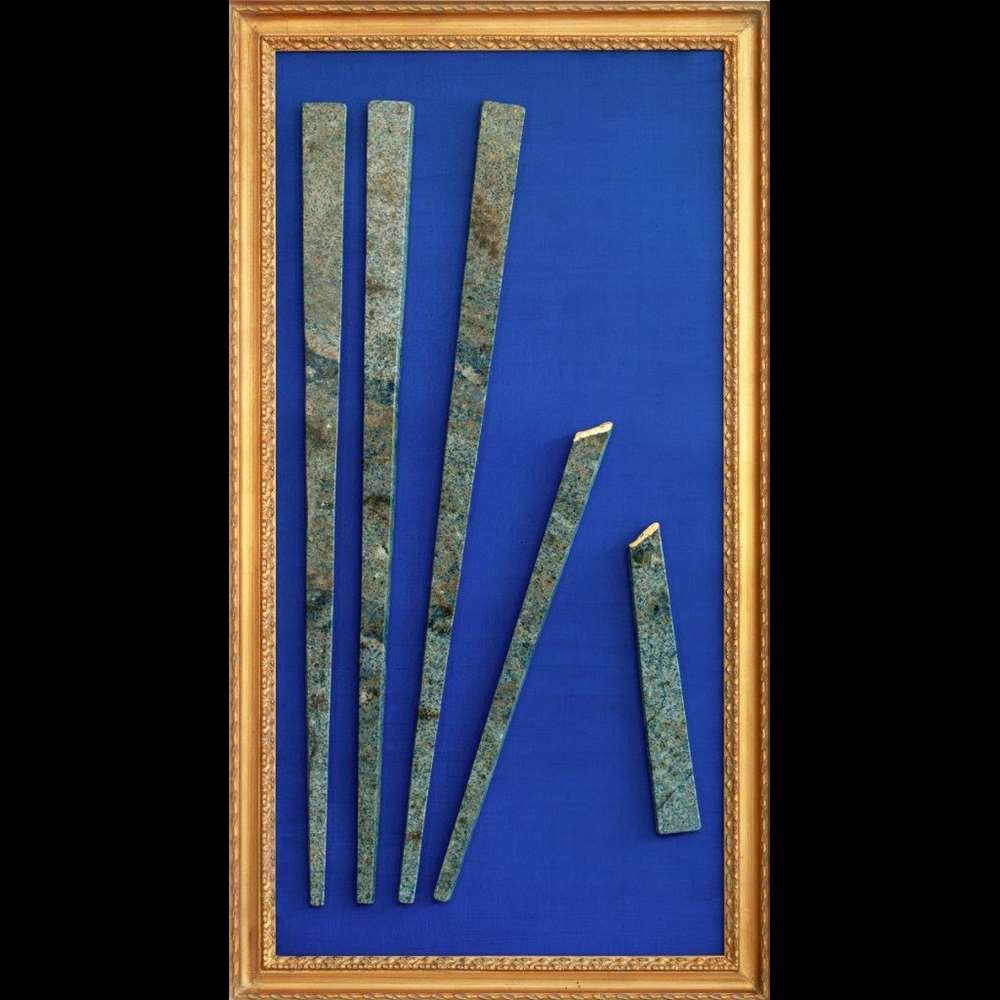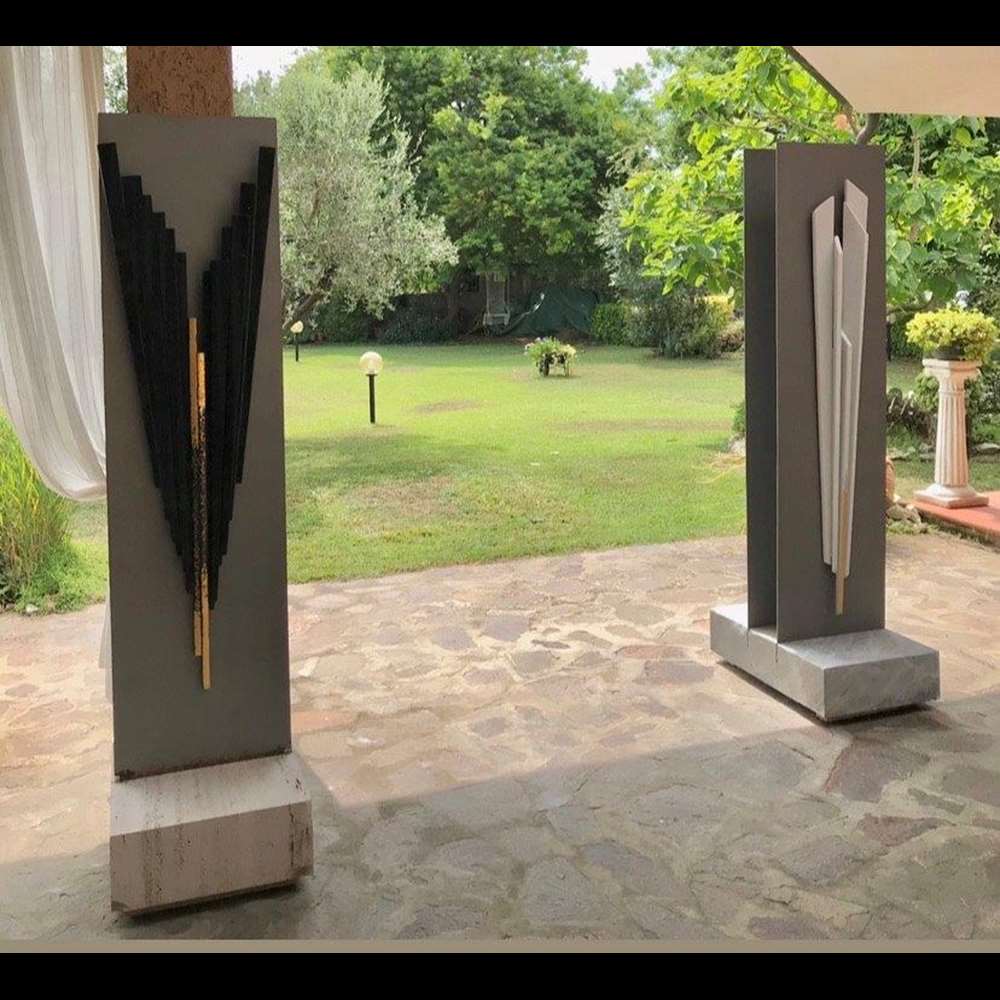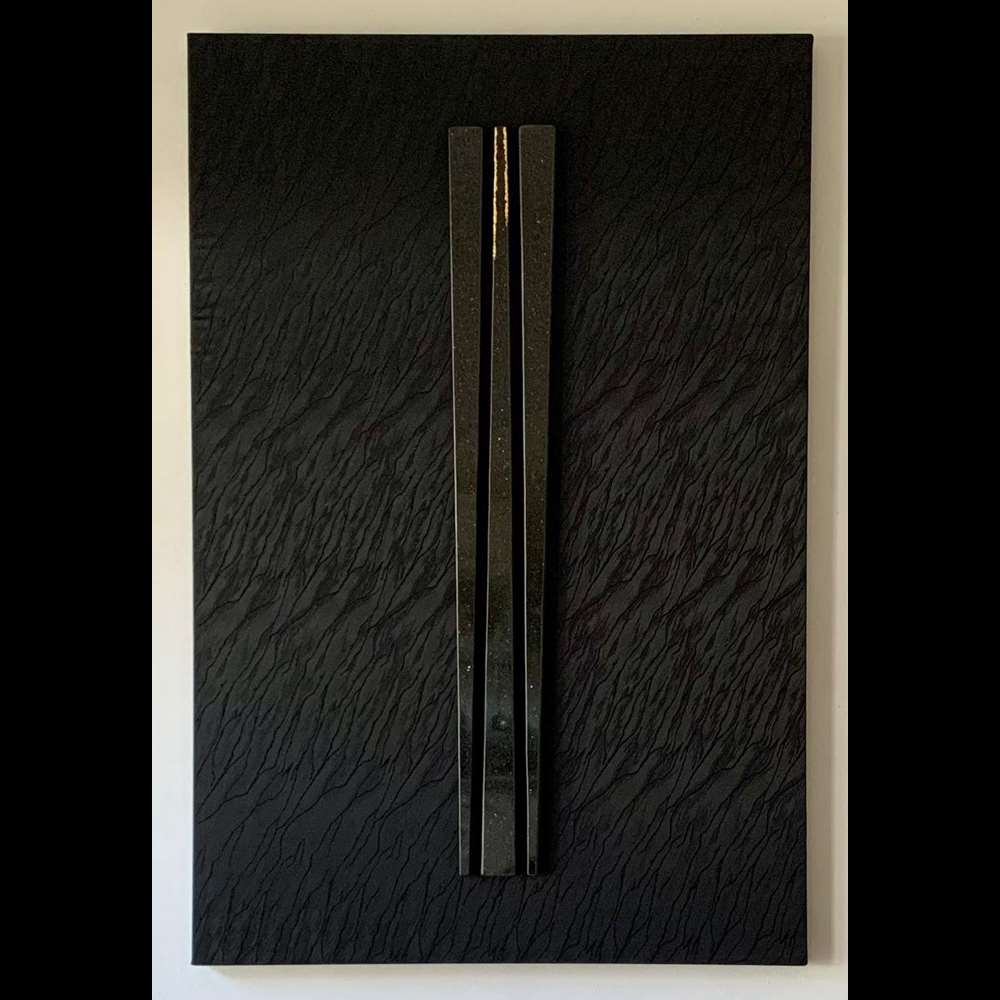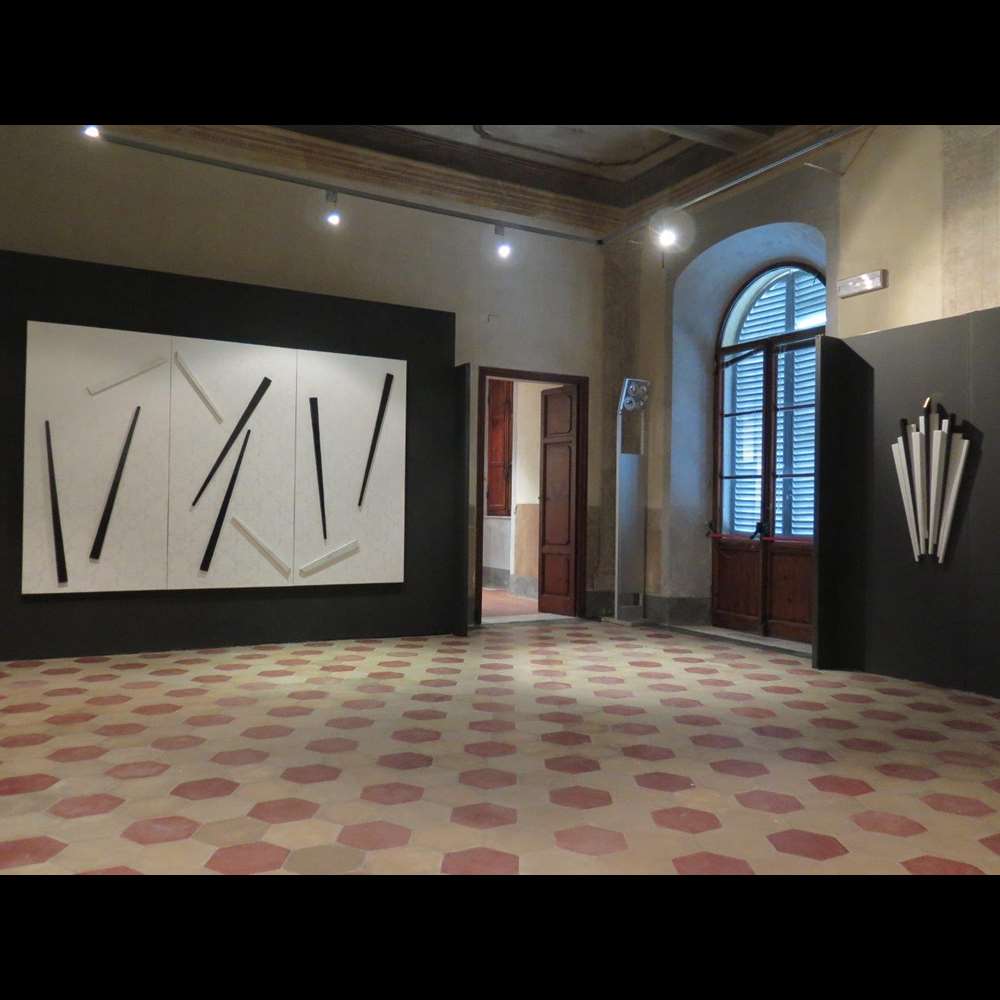-
Interview
1. What are the foundations of your research (Art Identity)?
My research after a long phase of technical apprenticeship has found
its reason in classicism. I never looked at the painter or the
sculptor but I have always aspired to the author. Hence the choice of a
millenary material such as stone, starting with marble as the first
zero km element. My reflection has eliminated any preamble
provocative or trendy to address the fundamental themes of the story
of art. The structure and the deconstruction, the full and the empty,
the whole and the broken, the unique and the multitude, the micro and the macro,
etc. Painting with its virtuosity was not enough for me as I am not
traditional sculpture was enough. So I merged all my experiences
to arrive at a physical relationship suitable for arms, suitable for
breath. So I tried to put one at the center of my action
existentialist poetics that transforms gravity into spirituality. The
attempt is to evoke the infinite in the purity of an unexpected outcome.
2. Who are the artists who have guided you in your research?
Given how important all artists are to the formation of
a new identity in my career Giotto and
Masaccio, Giacometti and Bacon, Burri and Fontana, Lo Savio and Uncini,
Melotti and Castellani.
Continues...
3. Define yourself as a human being using three adjectives.
Restless, irregular, in Italian “irre”.
4. According to your vision, where is he going and where would you like him to go, contemporary art?
My greatest wish is to see contemporary art return to
stone. That stone that costs effort and sweat as it throws and cuts.
That stone that contains history and memory. That matter it requires
the use of body and mind, while opposing or allowing oneself to be conquered,
it always depends on our attitude if distant and listless or if
warm and involved. A stone falling on the feet of imposters and
some fools. A stone that protects the nerves and heart of those who know how to love it.
So I work hard to get art back at the center of the debate in the
daily living. And I always hope that this happens at the hands of one
"Congiura dei Poeti", acclaimed and supported, as a vital need of
freedom and thought. By putting the artist back at the center of the system,
so that it never happens again that it is the system that disposes of doing or of
get rid of the same.
TWO WORDS ABOUT HIS WORKS
Gioni David Parra focuses his attention on Matter and Light, analyzed over years of study. We find in him a real love for work and for the preparatory act, which flowed into his mixed techniques and collected in the "Projects" series. His tireless research draws possible new existential and spiritual balances from the unknown, despite his powerful and decisive sculpture. He is internationally recognized as the "Warrior of matter" precisely in reference to his Bladelight hes, blades of light. He chooses to work the lightest part of his marbles (white marble is his material of adoption worked in Pietrasanta in the shadow of the Apuan Alps) and granites that come from all over the world and of which he is an expert, i.e. the slab . This is how sharp swords are born that Parra takes from the ancient tradition, in particular from the San Paolo by the Tuscan Masaccio. This sword, being in the hand of a man of faith, loses its offensive character and becomes a weapon of thought and belief for the artist. The sacredness of his works is clearly evident in Matterspirit, Materia dello Spirito where the concept of the whole and the broken is arranged linearly like a life path, where, however, at a certain point a split element appears, a fracture that is soothed by the leaf of gold, is then perpetuated in the entirety of the next element. The fracture is never definitive, it is never placed at the end of the path, it is not a death but an experience that, however negative it may be, manages to find its whole again.
Parra then removes the stone from the pedestal, unhinging tradition and coming to subtract body and weight from the marble to give spirituality and lightness to his works. The use of gold leaf derives from the study of Tuscan gold backgrounds from the 300-400s up to the Renaissance. He eliminates its classic decorativeness and makes it matter itself, topical of the crucial moments of his sculpture. The Bladelights take shape to become a single sculpture or they are deconstructed and freed to become a theater where the blades move, creating ever-changing sets and choreographies. The whole is present as well as the broken pieces, and it is precisely on the latter that the gold leaf settles. Where there is apparently a break, where at first sight there could be only ugliness and evil, the maximum of beauty and light arrives, which recalls, reunites and rediscovers its unity by strengthening itself. There is a strong existentialist thrust that reconnects with human experiences, where sometimes personal growth and the future realization of the self is hidden behind failures and traumas. Even in the NoCube, NonCubi, there are free cuts that undermine the geometric perfection to underline instead, all the decisive analytical passages of what is the practice of making sculpture and of being a sculptor. Often the raw material is found, to then move on to smoothing and finally with the most reflective lucidity. We also find gold leaf in the fractures and incisions of the NoCubes.
Parra's sculpture represents a constant body to body, energetic and vital, where the intelligence of his hands works in the weak points of the material, between fractures and cracks, where everything seems lost, he rebuilds and finds a new dimension full of life.
Lisa Parra
